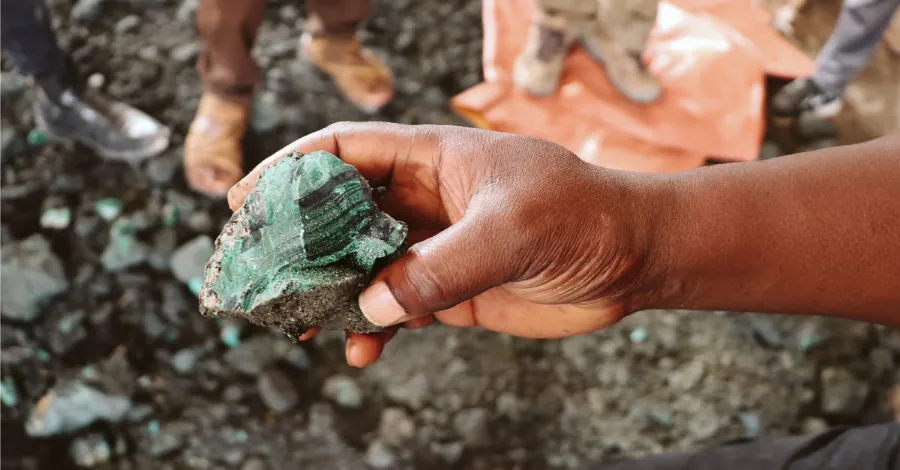In the depths of the Democratic Republic of Congo, the tragic story unfolds every day: people, including children, labor in dangerous and brutal conditions, mining the cobalt needed for the rechargeable batteries that power our phones and electric vehicles. Their struggle remains largely invisible to consumers who enjoy modern conveniences.
The spread of industrial-scale cobalt and copper mines has led to forced evictions and grave human rights violations in the Democratic Republic of Congo. As global demand for rechargeable batteries grows, the human cost of mining cobalt increases. According to researchers at Harvard, cobalt mining inflicts real human suffering and lasting loss on the environment.
This hidden relationship between our digital devices and what experts have called “modern slavery” highlights the relationship between consumer choice and human rights. The batteries that give life to our devices are manufactured through the work of miners in the Democratic Republic of Congo, who benefit little fromthe resources they mine from below their feet.

The Human Toll of Cobalt Mining in Congo
The Democratic Republic of Congo produces over 70% of the world’s cobalt, a critical component in lithium-ion batteries. This industry’s growth has come with severe human costs, affecting thousands of workers and communities across the country’s mining regions.
Working Conditions and Human Rights Abuses
The cobalt mining industry in Congo is extremely dangerous and unsafe. Workers suffer from unsupportive and harmful work environments with little to no safety protections. Many are forced to work in unstable tunnels, which can collapse at any time and cause injuries and deaths in but accidents are seldom reported.
Accidents occur commonly, but rarely make the headlines globally. Workers are subjected to inhalation of toxic dust and chemicals without any proper personal protective equipment. Exposure to toxic dust and chemicals can lead to respiratory problems and other long-term health issues.
Human rights groups have reported a plethora of abuses that exist in mining operations, including the use of physical violence, psychological intimidation, and exploitation by security personnel, contractors, and mine operators. Those working in mines work 12+ hour shifts for a pittance- earning less than 2 dollars a day, even as they extract valuable minerals. The workers do not have any labor protections, medical benefits, or prospects of employment.
Child Labor and Artisanal Miners
An estimated 40,000 children work in Congo’s cobalt mines, some as young as six years old. These children often carry heavy loads and work in dangerous conditions instead of attending school.
Artisanal miners, who work independently without formal employment, make up about 20% of Congo’s cobalt production. They typically use hand tools to dig, sort, and wash cobalt ore without safety equipment or training.

Children in mining areas commonly suffer from chronic illnesses, malnutrition, and stunted development. Many develop muscular and skeletal problems from carrying heavy loads during crucial developmental years.
Families often depend on their children’s income for survival, creating a cycle of poverty and limited education that’s difficult to escape.
Poverty and Community Impacts
Mining operations frequently displace communities without fair compensation or relocation assistance. Families lose their homes and farmland, driving them deeper into poverty.
Environmental damage from mining contaminates water sources and soil, making agriculture difficult in nearby areas. Rivers and streams contain high levels of toxic metals that harm local wildlife and human health.
The mining economy creates extreme inequality. While foreign companies profit billions from cobalt exports, most Congolese citizens in mining regions live on less than $1.90 per day.
Local infrastructure remains poor despite mineral wealth. Communities near mines often lack clean water, reliable electricity, adequate schools, and healthcare facilities.
Cobalt’s Role in EVs and the Global Supply Chain
Cobalt has become a critical mineral in our modern world, powering the electric vehicle revolution while creating complex supply chain challenges.
Demand for Cobalt in Electric Vehicle Batteries
Cobalt is an essential part of lithium-ion batteries that we use to power electric vehicles. The batteries generally use 10-30 pounds of cobalt, based on the type of battery. Cobalt aids the battery to retain stability and improve battery life.
Without cobalt, the batteries can become too hot or degrade quickly. As sales of EVs around the world increase (growing from 3.2 million in 2020 to over 10 million in 2022) cobalt demand has rapidly increased. Experts estimate we’d need 3-4 times more cobalt by 2030 to meet EV targets. As automakers like Tesla, Ford and Volkswagen rapidly start to expand their electric vehicle offerings, they are racing to secure cobalt supplies.
The Cobalt Supply Chain and Major Players
The Democratic Republic of Congo (DRC) dominates cobalt production, supplying about 70% of global cobalt. This creates a concentrated supply chain with significant risks.
China processes most of this cobalt, controlling about 80% of the refining capacity. Major tech companies like Apple, Samsung, and Sony rely on this supply chain for their devices.

The supply chain typically works like this:
- Mining in the DRC (both industrial and artisanal)
- Export to refineries (mostly in China)
- Processing into battery materials
- Battery manufacturing
- Assembly into EVs or electronics
Prices fluctuate dramatically based on EV demand forecasts, with prices ranging from $30,000 to $100,000 per ton in recent years.
Environmental Challenges: Pollution and Carbon Emissions
Cobalt mining creates serious environmental problems. Open-pit mines destroy habitats and leak toxic substances into local water supplies.
Processing cobalt uses harsh chemicals and generates hazardous waste. Without proper controls, these can poison surrounding communities and ecosystems.
The carbon footprint is substantial, too. Mining and refining one ton of cobalt can produce 7-15 tons of CO2 emissions, depending on the energy source used.
Water pollution from mining operations affects rivers and groundwater, often with high levels of metals like uranium and arsenic contaminating drinking water sources.
Transporting cobalt globally adds more emissions, as materials travel from mines to refineries to battery factories across multiple continents.
Prospects for Recycling and Sustainable Alternatives
Recycling could be a solution to help lessen new mining. Other than current recycling options that can recover about 95% of cobalt from batteries, only about 5% of lithium-ion batteries are recycled today.
Companies like Redwood Materials and Li-Cycle are creating recycling facilities to get to a “circular economy” for battery materials. Scientists are also working on reducing the amount of cobalt in batteries or even making cobalt-free batteries.
Tesla is using LFP (lithium iron phosphate) batteries in some models that do not have cobalt at all. Other exciting alternatives: Sodium-ion batteries, Solid-state batteries, Manganese-rich cathodes. Additionally, battery manufacturers are reducing the amount of cobalt in their batteries. Early EV batteries contained up to 33% cobalt and are now down to 10% or less in the newest formulations.


